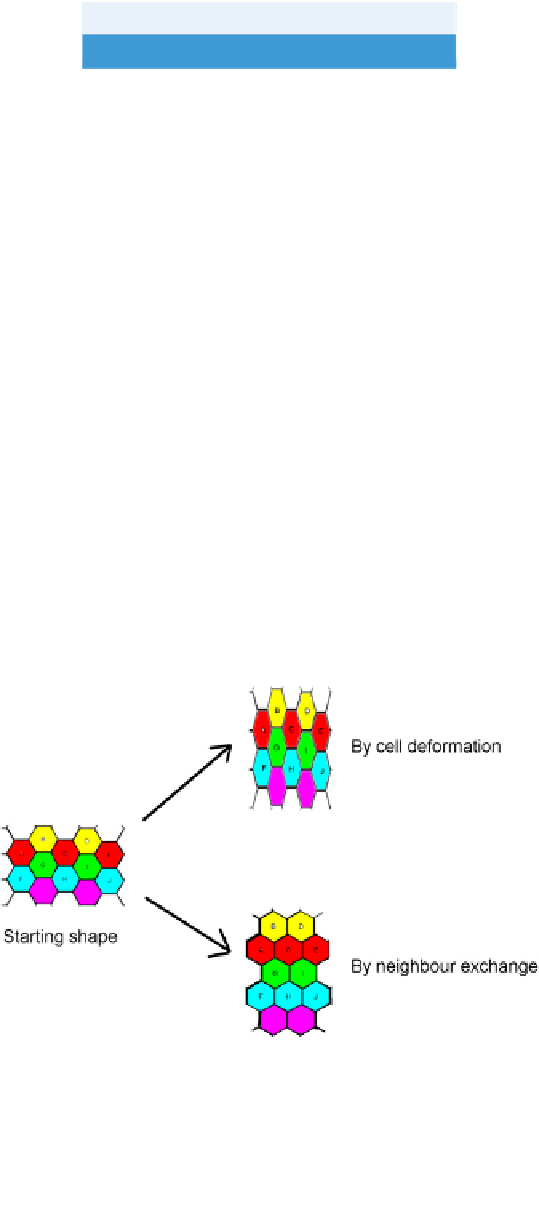Biology Reference
In-Depth Information
CHAPTER
16
Neighbour Exchange and
Co
nvergent Extensi
on
It is a feature of animal development, especially of early development, that epithelial
tissues have to change shape dramatically and quickly. In many instances, epithelial sheets
appear to 'flow' as if they were fluid membranes able to stretch and bend as new structures
form, and they do so rapidly enough that there is no time for cell division to be the main
driver of the process. Stretching could, in principle, be achieved either by a change in the
shapes of individual cells or by a reshuffling of cells so that they exchange neighbours. Defor-
mation of individual cells is a common mechanism of morphogenesis in plant tissues (see
Chapter 6) but, in many animal systems, the shapes of individual epithelial cells are 'normal'
(not unusually stretched in any direction) both before and after the change of tissue shape.
This is only possible if epithelial cells are able to change neighbours (
Figure 16.1
). It used
FIGURE 16.1
The difference between two strategies for deforming a short, broad sheet to make it tall and thin.
In the cell deformation model, cells maintain their neighbour relationships but alter their shapes. This method is
seen mainly in plants (see Chapter 6). In the neighbour exchange model, cells have the same shape at the end of the
process as they do at the beginning but they change neighbours; this can be seen in the schematic by the coming
together of cells of like colour in rows.

